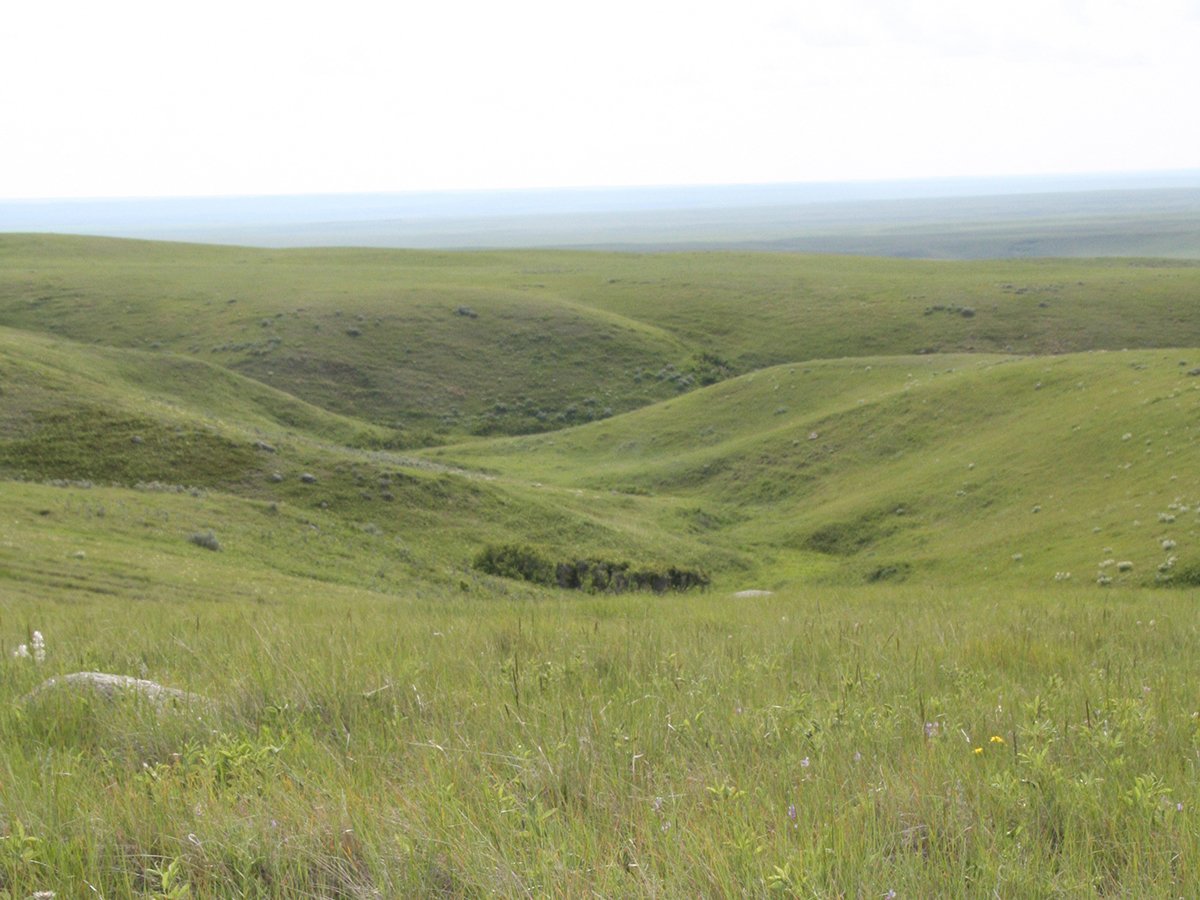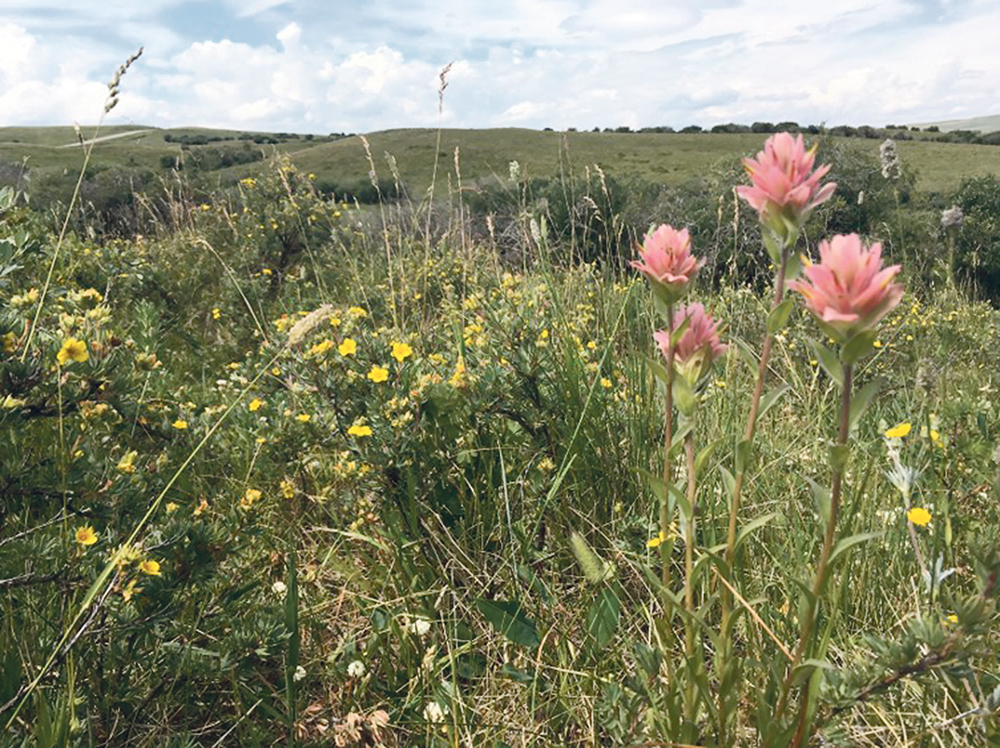Study finds adaptive multi-paddock grazing can reduce plant diversity, but not much worse than conventional practices
A new study has found that adaptive multi-paddock grazing by cattle has a minimal if slightly negative environmental impact on plant diversity, says a scientist.
Previous research had been inconclusive, fueling concerns “you can end up shooting yourself in the foot by using such intensive management,” said Jessica Grenke, a doctoral candidate in the University of Alberta biological sciences department.
There have been fears that AMP grazing will be unsustainable for many plants, resulting in desirable species being weeded out, she said. However, a new study led by Grenke “is quite encouraging for the use of AMP across the northern Great Plains because there has been some hesitancy.”
Read Also

Alberta irrigation project on grasslands approved
Environmental concerns raised by Alberta conservation groups over irrigation expansion project within rural municipality
Besides Grenke, the study’s co-authors were Edward Bork and Cameron Carlyle of the university’s Department of Agricultural, Food, and Nutritional Science, along with Mark Boyce and James Cahill of the Department of Biological Sciences.
The research team found a slight decline in plant diversity at the grazing level, said Grenke.
“And then we also find fewer species at the ranch level as well, so there is a downward negative trend of this grazing management system on plant diversity.”
However, there was no difference between AMP and conventional grazing systems in terms of the overall impact on plant community identity, she said.
“So, there was slightly lower diversity in AMP systems, but this was quite minimal throughout.”
The study also found the negative impact on diversity “was particularly pronounced for native species, so it seems that this system is kinder to introduced species than it would be to native species.” However, the overall decline was again slight, she said.
“So, if you look at the characteristics of the plant community kind of in bulk, there was no difference between the different systems…. There are fewer species on AMP management, for sure, but it is quite small on the balance of things.”

AMP grazing involves dividing fields into smaller paddocks, with cattle rotated through each paddock for short periods at high intensities. It is followed by long periods of rest for the land, allowing vegetation time to regrow.
“A lot of our ranchers will use electric fencing, that kind of thing … we had one that had 100 paddocks in quite a small area, and they were moving twice a day, so it can get quite extreme.”
Such grazing seeks to emulate the habits of herds of bison in the northern Great Plains before colonization, said Grenke.
“They would go where the freshest, most nutritious grass was and rapidly move through the landscape, allowing the landscape they had just grazed to regrow prior to returning to those areas,” she said.
“And the idea of high-intensity systems like AMP is that by mimicking that, we can really harness all of the ecological goods and services that the system can provide. We can just really maximize them by returning to those old patterns.”
Numerous research projects investigating AMP grazing were launched under the Agricultural Greenhouse Gas Program of Agriculture Canada, which funded Grenke’s study. Her project involved 36 ranches, which were divided into 18 pairs of AMP operations matched against nearby non-AMP ranches that were regionally typical.
“And what we’re finding is the actual, on-the-ground consequences of AMP across a broad geographic scale with this control mechanism built in, so we’re able to more powerfully answer the question of what AMP is doing to the landscape than has ever been possible before, which is why I’m so excited about this work.”
Most of the ranches were in aspen parkland ecosystems in Alberta, Saskatchewan and Manitoba because the study was based on volunteers who mostly came from such areas, said Grenke
Although more than 80 percent of ranchers in Canada use some form of rotational grazing, only about five to 10 percent likely practise AMP grazing, said post-doctoral fellow Tim Dobert of the U of A during an earlier interview.
A study led by Dobert found that AMP grazing can boost the movement or infiltration of water into prairie grassland soil, helping to promote drought resistance. Much of the Prairies experienced heat waves and drought last summer, forcing beef producers to sell part of their herds.
There has been anecdotal evidence AMP grazing promotes the buildup of organic carbon in soils via vegetation, raising hopes it could store carbon emissions as part of the fight against climate change, he said.
However, ecosystems contain many different parameters that are simultaneously at play, he added. This complexity makes it difficult for scientists to provide clear findings about the impact of AMP grazing on grasslands, he said.
No experiments were conducted to determine the mechanics behind why native plants were more affected by AMP grazing than introduced species, she said. Only about four of the 18 pairs of ranches consisted of native vegetation, she added.
She speculated that introduced species were originally bred in countries such as England to provide forage for cattle under similarly intensive grazing regimes, potentially making them more productive and able to thrive under AMP grazing than native species.
“So, I don’t want to speak too much about this because I just don’t have the data to back this up. No one does, but yeah, it is an interesting aspect of this, for sure.”


















